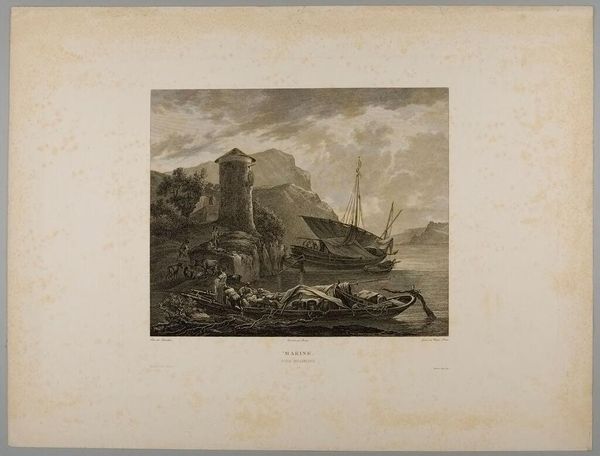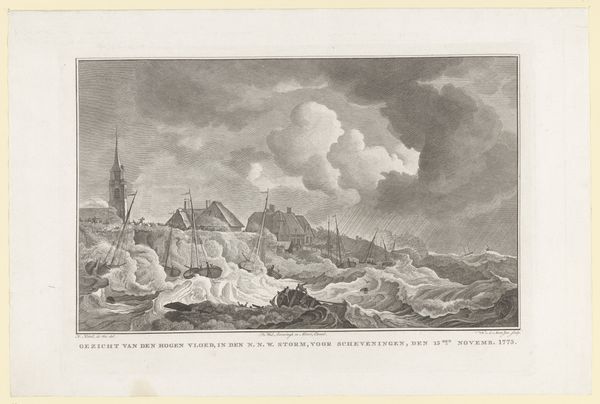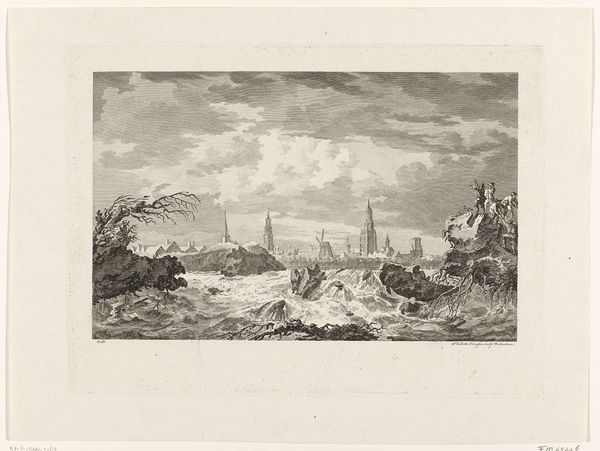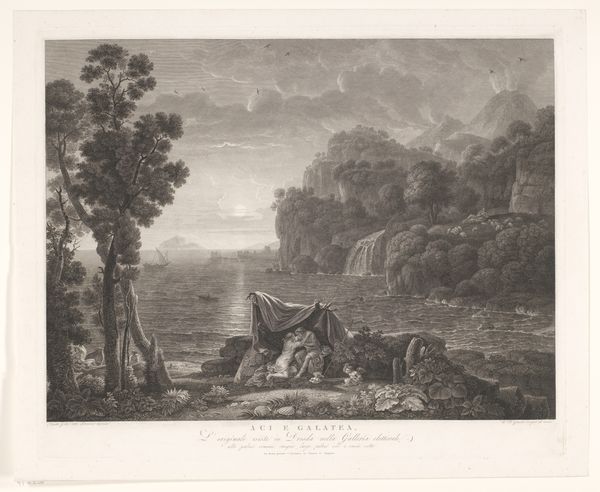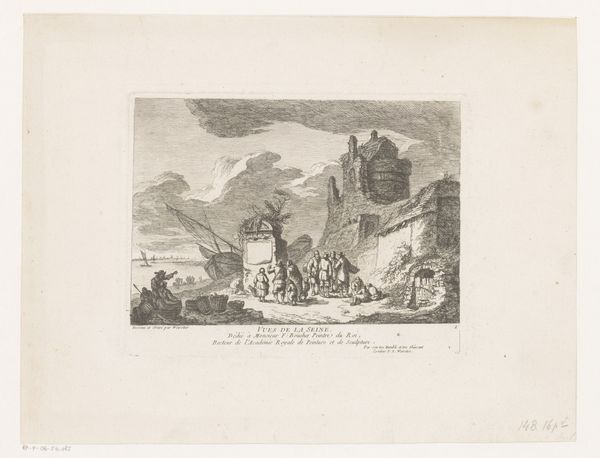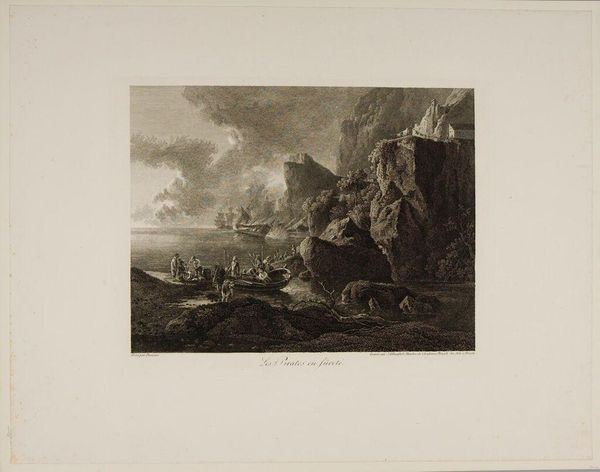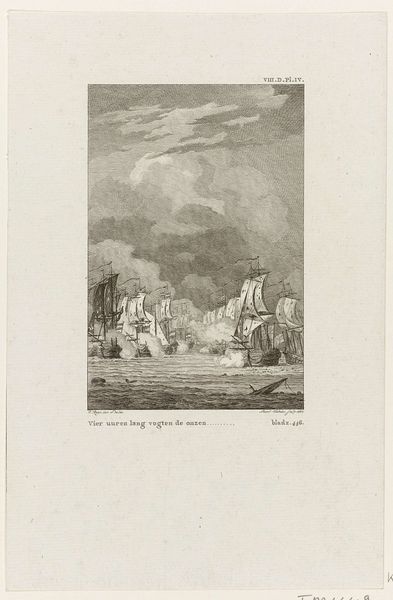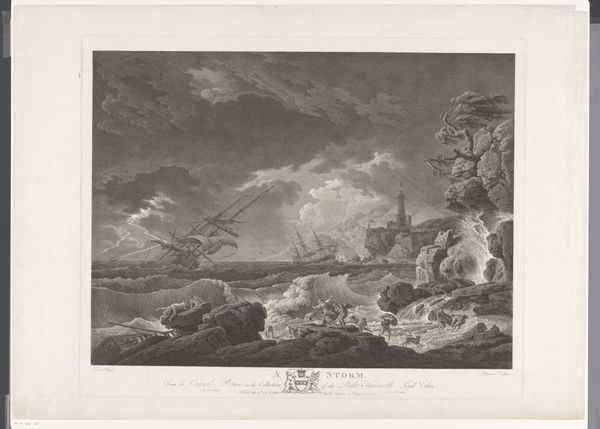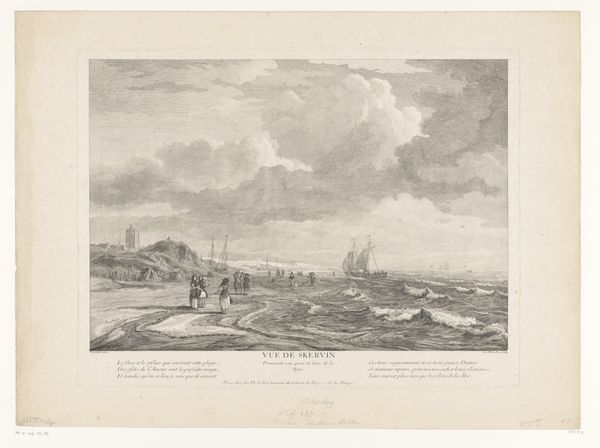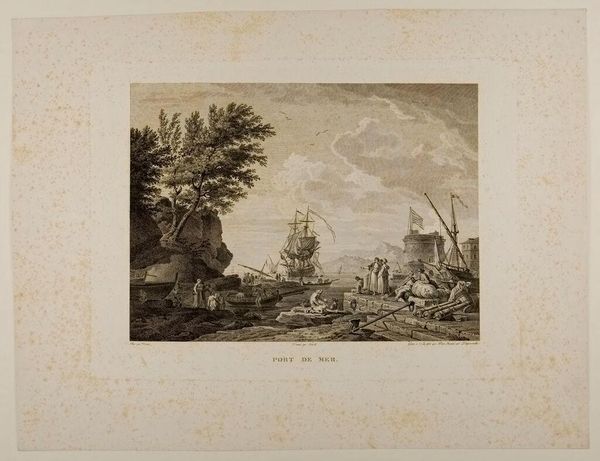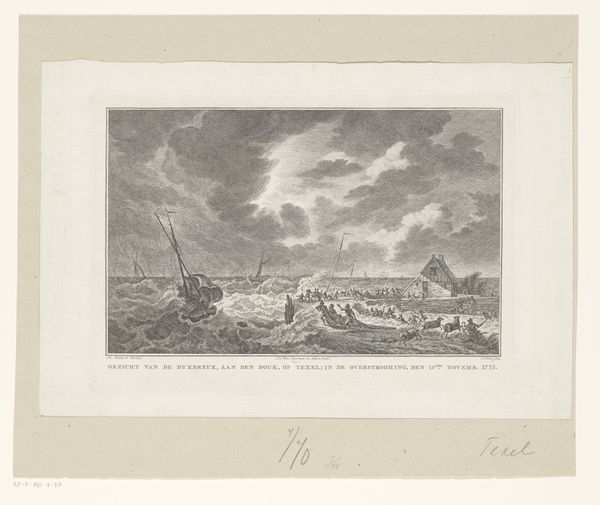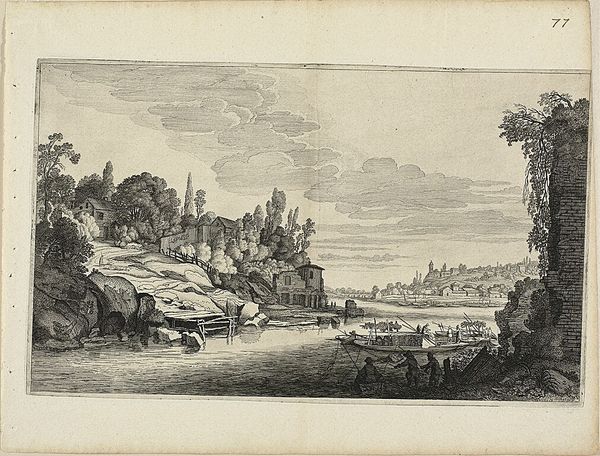
Het Instorten van Huizen en het Omkomen van Menschen en Beesten te Erichem, door den Watervloed / L'Ecroulemen des Maisons et la Mort des Hommes (...) 1809
0:00
0:00
print, engraving
#
narrative-art
# print
#
old engraving style
#
landscape
#
romanticism
#
history-painting
#
engraving
Dimensions: height 530 mm, width 690 mm
Copyright: Rijks Museum: Open Domain
Editor: This engraving, "The Collapse of Houses and the Death of People and Animals in Erichem, due to the Flood," made in 1809 by A. Lutz, is incredibly evocative. There’s such a sense of devastation and chaos conveyed, despite it being rendered in a very precise, almost detached style. How do you interpret this work? Curator: It's crucial to consider this image within its historical and social context. Natural disasters are never neutral events; they disproportionately affect marginalized communities. Look closely—how does the artist portray the victims? Are they individualized or rendered as a generalized mass? Editor: I see what you mean. They’re definitely generalized. Everyone is just scrambling to survive. Does that suggest something about the artist's perspective, or perhaps the perspective of the intended audience? Curator: Precisely. The Romantic era often grappled with ideas of the sublime and humanity's powerlessness against nature. But whose powerlessness are we really seeing here? The wealthy could rebuild, while the poor faced long-term displacement and precarity. Where is the account of those issues? We need to read against the grain of the image. What isn't shown can be as revealing as what is. How might we connect this event with what we are seeing in contemporary natural disaster narratives? Editor: So, even a seemingly straightforward historical image can be read through a lens of social and economic inequality. I hadn't considered that the act of depicting the disaster itself could be a kind of…statement about power. Curator: Absolutely. Art is rarely a passive reflection of reality. It's actively shaping how we understand the world. Editor: That’s a powerful perspective. It encourages me to look beyond the surface of any artwork. Curator: Exactly! It allows for much more thoughtful appreciation of any medium.
Comments
No comments
Be the first to comment and join the conversation on the ultimate creative platform.
